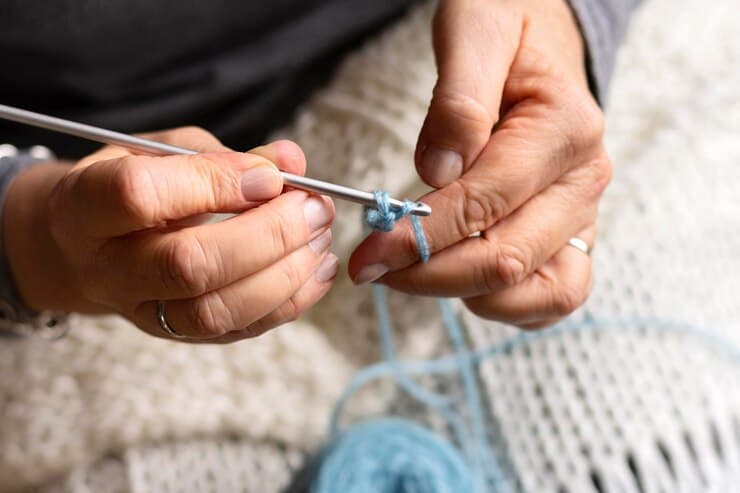How to Knit Buttonholes Like a Pro: Mastering the Art
Are you prepared to enhance your knitting projects with flawless buttonholes, whether it’s a snug cardigan, a chic polo shirt, or a practical pouch? If you’ve gathered your buttons but lack the expertise to create knitted buttonholes, worry not! This comprehensive tutorial caters to beginners, offering a straightforward approach along with valuable insights.
Mastering the Basics of Knitting a Simple Buttonhole
Crafting a fundamental buttonhole in knitting is remarkably uncomplicated, requiring familiarity with standard bind-off and cast-on techniques. This method is beginner-friendly, provided you approach it with a dash of patience. Let’s delve into the process:
- Reaching the Buttonhole Position: Initiate by knitting in pattern up to your desired buttonhole position;
- Binding Off Stitches: In the middle of the row, utilize a standard bind-off to release as many stitches as your buttonhole width;
- Seamless Continuation: Resume knitting in pattern until reaching the gap on the wrong side or the subsequent round;
- Bridging the Gap with Casting On: Employ a single cast-on to reintroduce as many stitches as previously bound off;
- Finishing Touches: Continue knitting in pattern, maintaining optimal tension to avoid unsightly gaps between the cast-on and the fabric.
For a tidier finish, contemplate knitting the first stitch after the last cast-on stitch through the back loop.
Explore the world of colorwork with our guide on Intarsia vs Fair Isle, unraveling the nuances of these captivating knitting techniques.
Determining the Size of Your Knitted Buttonhole
Unlike sewing, gauging buttonhole size in knitting demands a distinct approach due to the stretchiness of knitted fabric. Consider these methods:
- Button Placement on Swatch: Align your button’s left edge with a column of knit stitches on a blocked swatch, counting the stitches to the farthest hole;
- Distance Measurement: Measure the distance from the button’s edge to the farthest hole, multiply it by your stitch gauge, and round up to the nearest whole number.
Crucial Note: Factor in fabric stretchiness, individual gauge, and yarn type variations. Always knit a swatch for significant projects to validate your calculations.
Exploring Advanced Techniques: Reinforced Buttonhole Technique
For those aspiring to create buttonholes that exude refinement and durability, the reinforced buttonhole technique emerges as a valuable ally. While slightly more advanced than the basic buttonhole, the results justify the effort.
This technique fortifies the edges, making it ideal for projects where buttons endure heightened stress or for those pursuing a polished finish. Mastery of this technique imparts a professional touch to your knitted garments, ensuring enduring buttonholes.
Discover the art of blocking knitting in our comprehensive guide, ensuring your projects stand out with impeccable finishing touches.
Opting for a Simple Vertical Buttonhole
For projects with specific size constraints or a preference for subtlety, the simple vertical yarn-over buttonhole provides an elegant solution. Comparatively smaller and less robust than its horizontal counterpart, it suits projects with minimal wear and tear.
The simplicity of the vertical yarn-over buttonhole makes it an excellent choice when prioritizing functionality without compromising the overall aesthetics of your knitwear. Experimenting with this option introduces creative possibilities, particularly for smaller projects like delicate accessories or lightweight garments.
Unlock the secrets of small-diameter projects with our guide on Magic Loop Knitting.
Fine-Tuning Your Buttonhole Skills: Tips and Tricks
Creating a serviceable buttonhole is straightforward, but achieving perfection demands attention to detail. Consider these invaluable tips:
- Sturdy Upper Edge: Utilize a knitted cast-on or cable cast-on for enhanced upper edge stability;
- Mind the Placement: Avoid positioning the buttonhole too close to the edge to prevent rapid wear and unsightly bumps;
- Strategic Offset for Horizontal Buttonholes: Offset horizontal buttonholes from the edge for a well-centered button appearance;
- Optimal Sizing: Knit buttonholes slightly smaller than necessary to prevent fabric overstretching;
- Yarn Weight Dictates: Allow yarn weight to dictate buttonhole size, and contemplate using smaller buttons for fine gauge projects.
Refining Your Craft with Additional Insights
Beyond the fundamental steps, these additional insights can elevate your buttonhole-making skills:
- Embrace experimentation with different yarn types, considering the stretchiness of sheep wool, the structure of cotton, or the elegance of silk. Tailor your buttonholes to suit the unique characteristics of your chosen yarn;
- Acknowledge that the stitch pattern you employ influences the overall appearance and durability of your buttonholes. Test your technique within a small swatch using the same stitch pattern as your project to ensure seamless integration;
- Instead of a singular cast-on, explore the added stability offered by a knitted cast-on or a cable cast-on. This slight adjustment can significantly prolong the life of your finished piece;
- Observe the not-so-obvious detail of matching button size to your yarn weight. Selecting smaller buttons with fine gauge yarn ensures a harmonious appearance and minimizes wear and tear over time;
- Perfecting the art of buttonholes, like any skill, comes with practice. Knit several swatches, experiment with various button sizes, and subject your samples to wear and tear testing. This hands-on approach will provide a deeper understanding of what works best for your specific project.
Conclusion
Unlocking the potential of knitting buttonholes broadens the horizons of your creative projects. Whether opting for a foundational approach or delving into more advanced techniques, these skills will elevate your knitting prowess. Embrace experimentation, engage in regular practice, and relish the journey of crafting beautiful and functional buttonholes in your knitted creations.
